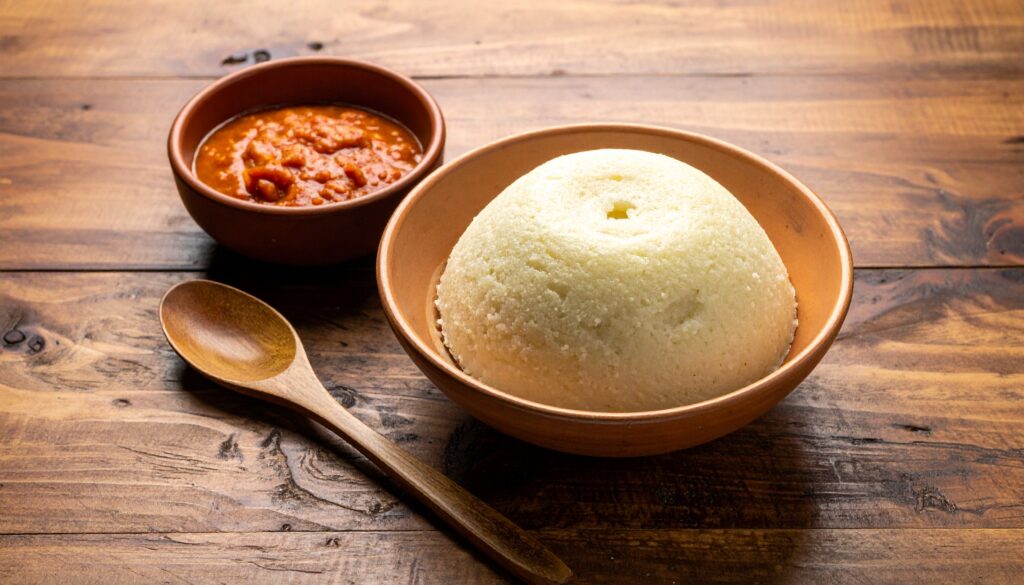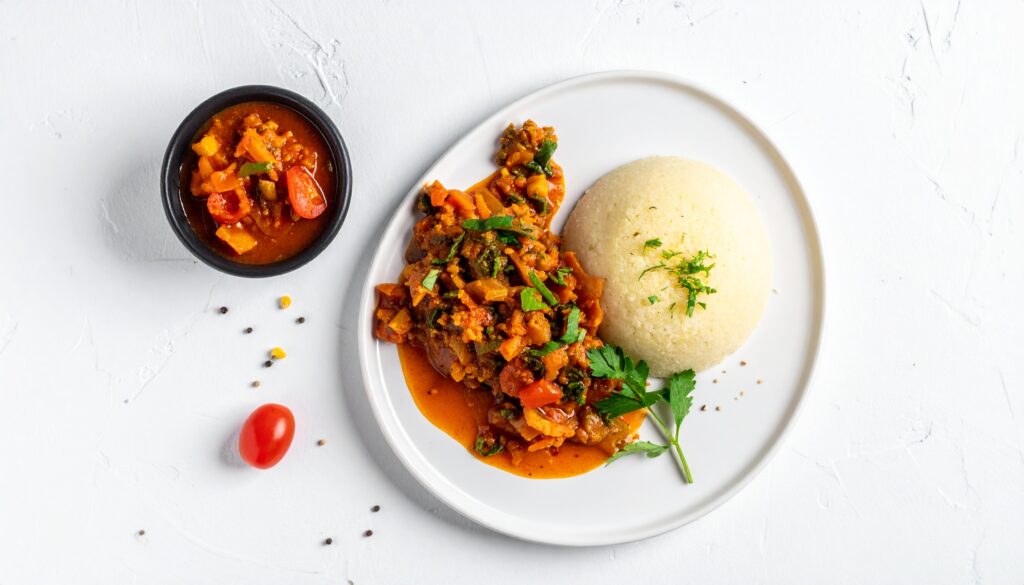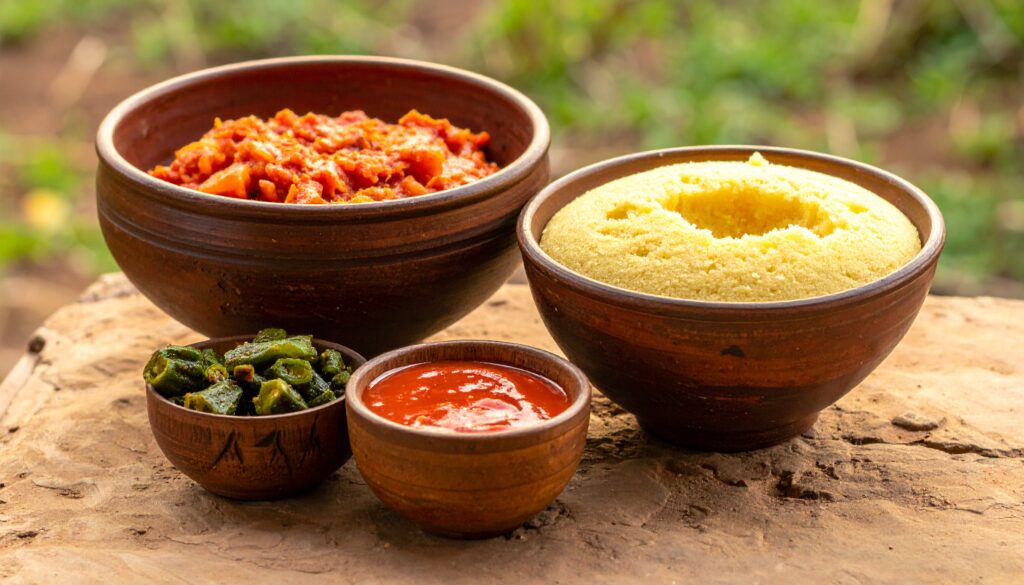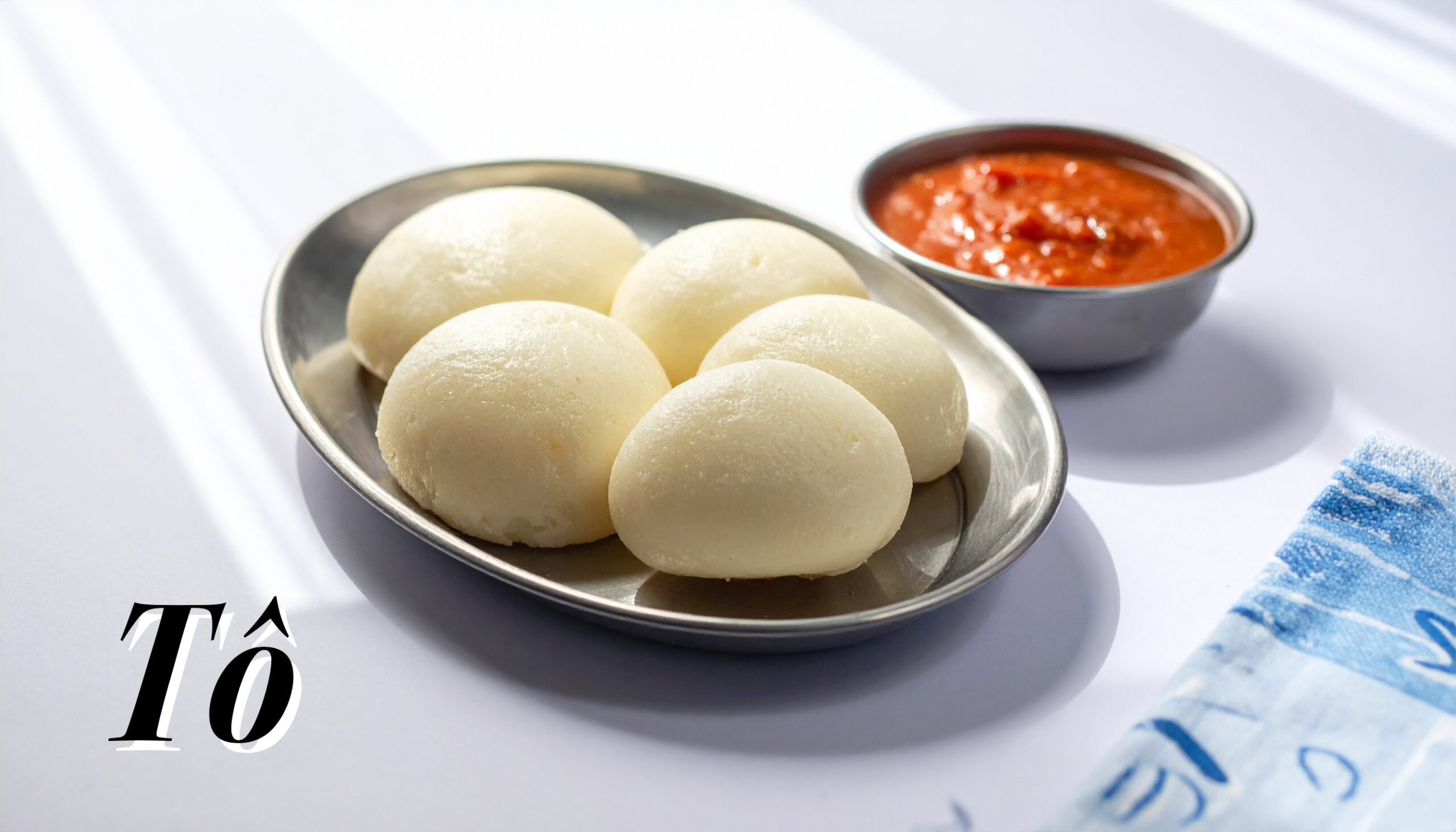Do you know about a dish called Tô?
It's written as Tô in the alphabet, which is quite unusual, isn't it?
So what kind of dish is it exactly?
This time, I'd like to delve deeper into this Tô!
Please enjoy it all the way to the end!
Tô is

Tô is a traditional porridge-like staple food eaten primarily in the Sahel region of West Africa.
It is also sometimes called “Saglè” or_ ‘Pâte’ (French for “kneaded dough”).
Tô originally comes from the Mòoré language, meaning to knead, mix, or prepare food.
Therefore, the word itself represents a state of being kneaded and refined.
During the French colonial era, when it was replaced by French, it came to be written as Tô, closer to the pronunciation of “to.”
Tô is made by kneading grain flour with water, then chilling it to complete the process.
It bears some resemblance to Japan's “uiro” and “dango,” but it is softer and is positioned as the main dish.
It's common to tear off pieces and dip them in sauce; the Tô itself has little flavor and is mild and neutral.
The pleasant aroma derived from the grain and the soft, chewy texture create a delightful balance.
It never lets the sauce overpower it, nor does it overwhelm the sauce.
The charm of this dish lies in the synergy between the sauce and the ingredients, drawing out the best in each other.
The History of Tô

Its origins date back to the era when agricultural culture was established.
The Sahel region where Tō was born is characterized by a stark contrast between rainy and dry seasons, with low annual rainfall.
Therefore, a culture centered on drought-resistant grains as the staple food is established.
And as the wisdom of grinding grains into flour for easier storage and processing emerged, the technique of kneading with water and heat also became established in the region.
As a result, millet-based “paste porridge/dumpling-like foods” developed as a staple food form.
Subsequently, Tô became established as a staple food for daily meals within rural communities and families, as well as for regional festivals and ceremonial occasions.
While there is a lack of clear documentation stating “this dish originated in this country under this name,” it is considered a staple food form that spans multiple ethnic and linguistic regions.
Tô's Trivia & Fun Facts
“Tô” means “food.”
In the language of the Mossi people of Burkina Faso, the word “Tô” itself is sometimes used to mean “food.”
In other words, saying “to eat Tô” carries the same nuance as literally “to have a meal.”
Even at the royal table

Tô is often thought of as a commoner's food, but in parts of Burkina Faso and Mali, it is sometimes served as a formal dish for royalty and during ceremonies.
Adding special sauces—such as groundnut or okra sauce—is said to elevate it to a more formal dish.
Tô eats with his bare hands.
The traditional style is to eat Tô without using a fork or spoon, tearing off bite-sized pieces with your right hand and dipping them in sauce.
When eating, roll it into a ball in your palm, create a hollow with your thumb to scoop up the sauce, and bring it to your mouth.
This practice embodies “respect for food” and “a sense of oneness with nature.”
“Tô Day”
In some regions of Burkina Faso, there is a custom of eating Tô on market days (such as once a week), and that day is also called “Tô Day.”
It is cherished as a day when family and friends gather around the Tô to socialize.
Grains by region

- Northern Mali and_ Niger: Primarily millet and_ sorghum
- Burkina Faso and_ Southern Mali: Cornmeal
- Northern Ghana: Known as “TZ (Tuo Zaafi),” it is akin to a relative of the Tô people.
Even with the same “Tô”, the grains and sauces used vary by region, making it a dish that reflects the local climate and culture.
Also note its high nutritional value
Tô is not only a source of carbohydrates; the sorghum and millet used are rich in iron and dietary fiber.
This traditional dish is exceptionally well-balanced, providing protein and vitamins through the use of peanuts and okra in the sauce.
The Food and Agriculture Organization of the United Nations (FAO) also recognizes the value of traditional foods in improving regional nutrition.
How to Make Tô
Ingredients (serves 4)
- Corn flour (or sorghum flour)... 2 measuring cups (200ml each)
- Water... about 4 to 5 cups
- Salt... a pinch
How to make them
- Make the blanching liquid
Place about 3 cups of water in a pot over heat and add a pinch of salt.
Once boiling, dissolve about 1/4 cup of cornstarch in water and add it to the pot. Simmer gently until it thickens to a porridge-like consistency. This forms the base for the Tô. - Add the remaining flour.
Gradually add the remaining flour while vigorously kneading with a wooden spoon. The key is to mix thoroughly from the bottom of the pot to prevent burning. - Adjust firmness
Once the dough has become firm and cohesive, add boiling water little by little as needed to adjust to your desired consistency.
(Locally, the ideal texture is “chewy and moderately elastic”) - Finish
Reduce the heat and steam for 2 to 3 minutes. When a glossy sheen appears, it's done.
Transfer to a bowl and shape into balls using a spoon moistened with water.
How to eat
Tō is torn by hand and eaten generously coated with okra sauce or peanut sauce.
Locally, it is common to gather around large platters with family and friends and eat using only the right hand.
How to Make Sauce
It is traditional to dip Tô in sauce before eating.
Therefore, this time I will explain how to make two sauces that are considered standard.
Common Sauce ①: Okra Sauce (Sauce Gombo)
Ingredients
- Okra...200g (finely chopped or grated)
- Tomatoes...2 (roughly chopped)
- Onion...1 (finely chopped)
- Garlic...1 clove (minced)
- Peanut oil (or vegetable oil)... 2 tablespoons
- Salt and pepper... to taste
- Water or broth...2 cups
- Fish or meat (dried fish, beef, etc., as desired)...to taste
How to make them
- Heat oil in a pot and sauté the onion and garlic.
- Add the tomatoes and simmer until they break down, then add the meat and dried fish and simmer lightly.
- Add water or broth and simmer for about 10 minutes.
- Add the okra and simmer for another 10 to 15 minutes. Once everything is tender and creamy, season with salt to taste and it's done.
Common Sauce ②: Peanut Sauce (Sauce Arachide)
Ingredients
- Peanut butter (unsweetened)…4 tablespoons
- Tomato paste... 2 tablespoons
- Onion...1 (finely chopped)
- Garlic...1 clove (minced)
- Chili pepper... a pinch (to taste)
- Oil... 1 tablespoon
- Water or broth...2 cups
- Meat (chicken or beef)...200g (lightly stir-fried beforehand)
- Salt and pepper... to taste
How to make them
- Heat oil in a pot and sauté the onion and garlic.
- Add the tomato paste and sauté for a few minutes to release the aroma.
- Gradually add the peanut paste while stirring to dissolve it, then add water to make it smooth.
- Add the meat and simmer over low heat for 20 to 30 minutes.
- Season with salt and pepper to taste, then finish with a rich, savory sauce.
Summary
How was it?
This time, we introduced Tô from West Africa!
I hope I've been able to convey to all of you who read this just what Tô is.
Tō truly comes into its own when eaten with sauce.
And the variety of sauces is incredibly diverse, with different types found in different regions!
I think it'll be fun to explore and find the sauce you like best, including the two I introduced this time!
So, aren't you curious where you can eat this Tô?
It is said that African cuisine is served at restaurants in Japan.
However, not all African restaurants serve it, so you should check before visiting.
Making it at home is another option!
I've included the recipe again this time, but I think it's a dish that's relatively easy to make.
Be sure to make Tô and enjoy comparing different sauces!
Thank you for watching until the very end!
Feel free to check out our other articles too!


Comments